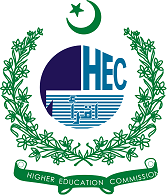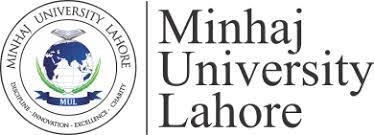Reasons for Pak- Afghan Conflict
DOI:
https://doi.org/10.58932/MULA0004Keywords:
Afghanistan, Pakistan, Duran line, Peace Process, Ethnicity, Taliban and Drugs TraffickingAbstract
The purpose of this study was to investigate the causes of and conflicts along the 2250 KM Durand line that separates two neighboring states. Although both countries are Muslim, their disputes are particularly difficult because Pashtuns, drug trafficking, and the Taliban administration are the two biggest problems in Kabul and Islamabad. Two close Muslim neighbors’, Pakistan and Afghanistan, have linguistic ties as well as deep historical, ethnic, cultural, and religious ties. Although Pakistan and Afghanistan share a strategic location and many other things in common, their relationship is marked by mistrust, suspicion, and bitter experiences for both parties. Since the beginning, Pakistan has had to deal with Afghanistan's hostility. All Afghan monarchs, with the exception of the Taliban's four-year rule, expressed varying degrees of hostility towards Pakistan. Conflict over the Duran Line, Pakistan's backing for the Taliban during the Soviet-Afghan War, Pakistan's involvement in the War on Terror, and the rise of cross-border extremism have all harmed relations between the two nations. This study's primary goal is to assess Pakistan-Afghanistan relations historically and to identify the biggest roadblocks to a harmonious and constructive relationship.
References
Naqvi, A. A. (2015). Pakistan-Afghanistan Relations Post 2014: Impacts on Pakistan's Security. ( 1st Vol), New York.USA.Regns Book.p49
Ahmed, Z. S., & Youssef, F. (2018). Pashtun Jirgas, their potential in Pak-Afghan reconciliationnal reconstruction. (1st Ed), New York.USA. Chelsea House.p79 on and nation
Timsina, J., & Connor, D. J. (2001). Productivity and management of opium –Heroin cropping systems: issues and challenges in Afghanistan. ( 1st Vol), Washington.D.C. USA. Carnage Endowment press.p99
Usman, T. (2008). Indian Factor in Pak-Afghan Relations. (3rd Vol), New York.USA. Research Journal of Area Study Centre.PP12
Malik, T. (2019). Pak-Afghan Water Issue: A Case for Benefit-Sharing. (1st Vol), London.England. Brunel Academic publishers.p10
Abbas, H. (2014). The Taliban revival: violence and extremism on the Pakistan-Afghanistan frontier. ( 1st Vol), New Heaven.USA.Yale University Press.P113
Pérez, J. G. (2014). Hassan Abbas. The Taliban revival. Violence and extremism on the PakistanAfghanistan frontier. ( 2nd Vol), Karachi.Pakistan.Oxford. press.p61
Razvi, M. (1971). The Frontiers of Pakistan: A Study of Frontier Problems in Pakistan’s Foreign Policy. (4rt Ed), Karachi. Pakistan. National Publishing House.pp160-161
Ahmad, A., & Khan, A. (2016). Integration through Language in the Pak-Afghan Borderland: The Interplay of past legacies, present realities and future scenarios. (1st Ed), New York.USA. Random House.p231
Tariq, M., Khan, A., & Khan, B. (2020). The Borderland Theory in the Context of Pak-Afghan Border. (1st Vol), New York.USA. Basic Book.p45
Yousaf, F. (2021). Jirga, Its Role and Evolution in Pakistan's Pashtun ―Tribal‖ Society. In Clan and Tribal Perspectives on Social, Economic and Environmental Sustainability. ( 1st Vol), New York.USA. Times Book.p67
Qassem, A. S., & Durand, H. M. (2008). Pak-Afghan Relations: The Durand Line Issue. (1st Vol), London.England. Allen Lane.p56
Bano, D. S. (2019). An Enigma of Pak-Afghan Border Security. (1st Vol), London.England. Allen Lane.p88
Saikal, A. (2010). Afghanistan and Pakistan: The Question of Pashtun Nationalism? ( 2nd Vol), Washington.D.C. USA. Carnage Endowment press.p97
Hussain, S., & Siraj, S. A. (2019). Coverage of Taliban conflict in the Pak–Afghan press: A comparative analysis. (2nd Ed), London.England. Central Asian Research Institute.pp102-103
Mili, H., & Townsend, J. (2009). Tribal Dynamics of the Afghanistan and Pakistan Insurgencies.
( 5th Vol), Washington.D.C. USA. Carnage Endowment press.p89
Groh, T. L. (2020). A Fortress without Walls: Alternative Governance Structures on the AfghanPakistan Frontier. ( 1st Vol), New York. Stanford University Press.p35
Suleiman-Khel, L. (2013). Loss, Mental Health Help-seeking, and Resilience among Pashtun Men in the Pak-Afghan Border. (1st Vol), New York.USA. The Penguin Press.p11
Hussain, S. W., Ullah, A., & Khilji, B. A. (2014). The Causes of Transit Related Pak-Afghan Cross Border Smuggling. (1st Vol), London.England. Allen Lane.p9
Misra, K. P. (1981). Afghanistan in crisis. ( 4rth Ed), New York. Stanford University Press.p4
Gregg, T., & Thirlwell, M. (2009). Caught in the crossfire: the Pashtun tribes of Southeast Afghanistan. (1st Vol), New York.USA. Free Press.p43
Akhtar, N. (2008). Pakistan, Afghanistan, and the Taliban. ( 3rd Vol), London.England. I.B.Taurus.p18
Feifer, G. (2009). The great gamble: The Soviet war in Afghanistan. (2nd Ed), New York. USA. Harper press.pp90-99




